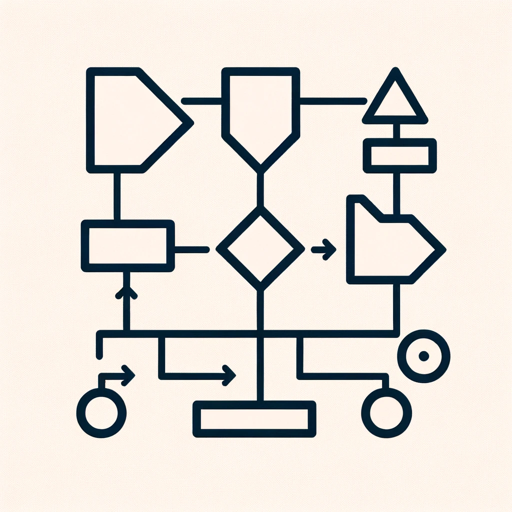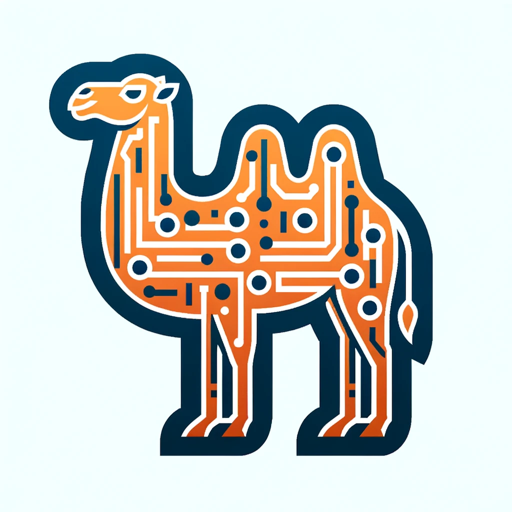App Sheet Companion-AI-powered assistant for tasks.
AI-driven tool for smart solutions.
Fix an AppSheet expression error
Best practices for AppSheet
Improve my AppSheet app's performance
Find a personal or professional usecase
Related Tools
Load More
App Sheet Pro Assistent
Your co-pilot for AppSheet, engaging in dialogue to solve tasks.

Power Apps Assistant
Assists with Power Apps, ensuring feature compatibility

Appster
Your AppSheet Copilot

Spreadsheet Companion
Your guide to mastering Spreadsheet with custom solutions in formulas, pivot tables, and data analysis. Interactive, easy-to-understand mentoring to enhance your data skills.

SFDC Companion
Your Salesforce mentor and companion architect

Smart Sheet Assistant
Expert in Smartsheet and its API
20.0 / 5 (200 votes)
Introduction to App Sheet Companion
App Sheet Companion is a specialized AI tool designed to assist users in navigating and maximizing the potential of AppSheet, a no-code development platform that enables users to create custom business applications. The primary purpose of App Sheet Companion is to offer detailed, context-sensitive guidance, support, and resources directly within the AppSheet environment. By providing timely assistance, it helps users overcome obstacles, streamline their app development process, and discover advanced features they might not have been aware of. For instance, if a user is trying to set up a complex workflow in AppSheet but encounters an issue with expressions, App Sheet Companion can provide step-by-step instructions, suggest alternative methods, and link to official documentation for deeper learning. This ensures users can keep progressing without frustration.

Key Functions of App Sheet Companion
Real-time Assistance and Troubleshooting
Example
A user encounters an error while setting up data validation rules in their AppSheet app.
Scenario
The user types in the error message they received, and App Sheet Companion analyzes it, identifies the root cause, and suggests potential fixes. It also offers to link to the official AppSheet documentation on data validation for further reading, ensuring the user fully understands the underlying principles.
Guided Workflow Creation
Example
A user wants to automate email notifications when a specific condition is met in their app.
Scenario
App Sheet Companion guides the user through the process of setting up an automated workflow. It provides detailed instructions on configuring triggers, defining conditions, and setting up the email action. This helps the user avoid common pitfalls and ensures that the workflow functions as intended.
Resource Recommendation and Learning Paths
Example
A beginner user is struggling to understand how to utilize AppSheet's expression language.
Scenario
App Sheet Companion suggests a tailored learning path that includes beginner-friendly tutorials, official documentation links, and practical examples. This personalized approach helps users gradually build their skills and gain confidence in using more complex features of AppSheet.
Ideal Users of App Sheet Companion
Business Professionals with Limited Technical Knowledge
These users benefit from App Sheet Companion as it helps them create and manage custom applications without needing in-depth coding knowledge. The tool’s step-by-step guidance and troubleshooting support allow them to focus on solving business problems rather than getting stuck on technical issues.
AppSheet Power Users and Developers
For more advanced users, App Sheet Companion provides valuable resources for optimizing and scaling their applications. It assists with complex tasks like expression building, workflow automation, and integration with other systems, helping them push the limits of what they can achieve with AppSheet.

How to Use App Sheet Companion
Step 1: Access the Tool
Visit aichatonline.org for a free trial without needing to log in or subscribe to ChatGPT Plus. This site provides easy access to the App Sheet Companion, allowing you to explore its features instantly.
Step 2: Familiarize with the Interface
Once on the platform, take a moment to explore the user interface. The tool is designed to be intuitive, with straightforward navigation. Familiarizing yourself with the available features and options will help you make the most out of the tool.
Step 3: Identify Your Use Case
Determine the specific scenario for which you need assistance, whether it's for academic writing, project management, app development, or another task. App Sheet Companion can adapt to a wide range of applications, so having a clear goal will optimize your experience.
Step 4: Interact and Customize
Engage with the tool by entering your queries or tasks. You can customize the level of detail, format, and style of the responses to better align with your needs. Use the settings and preferences to fine-tune the output.
Step 5: Review and Implement
Carefully review the responses provided by the App Sheet Companion. Implement the suggestions, solutions, or content generated to complete your tasks efficiently. Make adjustments as needed and continue to explore additional features for future use.
Try other advanced and practical GPTs
Flowchart Maker
AI-Powered Flowchart Generation Tool

Code Master
AI-powered solutions for developers

Prompt Creator
AI-powered prompts for diverse tasks.

Fenix AGI - Research Assistant
AI-powered research, writing, and coding assistant

Maître Blogueur
AI-powered content creation, tailored for you.

Cantonese Tutor
AI-powered Cantonese learning and translation.

EpiStat - GPT
AI-powered insights for epidemiology.

Docent AI
AI-powered guide to art and history.
Plant ID
AI-powered plant identification and uses

Page Conversion Advisor
Boost Your Web Conversions with AI

英会話コーチ
AI-powered tool for improving English conversation skills.

OCaml Genie
AI-powered OCaml programming assistance.

- Academic Writing
- Content Creation
- Project Management
- App Development
- Strategy Planning
App Sheet Companion Q&A
What is App Sheet Companion designed for?
App Sheet Companion is designed to assist users with a variety of tasks, including app development, content creation, and project management. It leverages AI to provide detailed guidance, tips, and automated responses tailored to specific use cases.
Can I use App Sheet Companion without any technical background?
Yes, App Sheet Companion is user-friendly and requires no technical expertise. The interface is intuitive, and the tool provides step-by-step assistance, making it accessible to users of all skill levels.
How does App Sheet Companion handle different use cases?
The tool is versatile and can adapt to various scenarios, such as academic writing, app design, business strategy planning, and more. By understanding your input and goals, it generates customized and relevant responses for each specific use case.
Is there a cost associated with using App Sheet Companion?
No, you can access App Sheet Companion for free without requiring a subscription to ChatGPT Plus or any other paid service. The tool is available for trial directly through the website.
How can I maximize the effectiveness of App Sheet Companion?
To get the most out of App Sheet Companion, clearly define your objectives before using the tool. Engage with the available features, customize your queries, and review the outputs thoroughly to ensure they meet your needs.